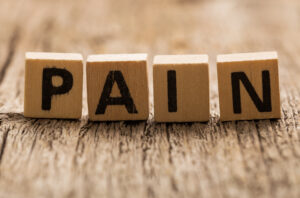Chronic back pain is a common problem that affects millions of people worldwide. While some cases of back pain may resolve on their own, others may require professional medical intervention. At The Institute for Comprehensive Spine Care, we believe it is important to educate our patients so that they can better identify when their pain is chronic, and might be a sign of a more serious condition that requires back pain treatment.
Signs That You Should Seek Professional Help
If you are experiencing lower back pain, there are several signs that indicate you should seek professional medical help.
Severe or persistent pain: If your lower back pain is severe or persists for more than a few weeks, you should seek medical attention. This may be a sign of an underlying condition that requires treatment.
Numbness or tingling: If you experience numbness or tingling in your legs or feet, this may be a sign of nerve damage.
Loss of bladder or bowel control: If you experience loss of bladder or bowel control along with lower back pain, seek medical attention immediately.
Difficulty walking or standing: If your lower back pain makes it difficult to walk or stand, it may be a sign of a more serious condition that requires medical attention.
Pain that worsens with movement: If your lower back pain worsens with movement, it may be a sign of a musculoskeletal injury that requires medical attention.
When Back Pain May Be a Sign of Something More Serious
While many cases of back pain are mild and self-limited, others can be a sign of a more serious underlying condition.
Spinal Fractures: A spinal fracture is a break in one of the bones in your spine. This can occur from a fall, car accident, or other traumatic injury. Symptoms include severe pain, inability to move, and loss of sensation in the limbs.
Spinal Infection: A spinal infection can occur when bacteria or other microorganisms invade the spinal cord or the tissues surrounding it. Symptoms include fever, chills, and back pain that worsens over time.
Spinal Tumor: A spinal tumor is a growth that develops in the spinal cord or surrounding tissues. Symptoms can include back pain, numbness, and weakness in the limbs.
Spinal Stenosis: Spinal stenosis is a condition where the spaces in the spine narrow, putting pressure on the spinal cord and nerves. Symptoms include pain, numbness, and weakness in the limbs, as well as difficulty walking.

Chronic Back Pain Treatment Options
Physical Therapy: Physical therapy can be an effective treatment for lower back pain. A physical therapist can teach you exercises to strengthen your back muscles and improve your posture. They may also use techniques such as massage, heat, and ice to relieve pain.
Medication: Over-the-counter pain medications such as ibuprofen and acetaminophen can help relieve lower back pain.
Injections: Injections of corticosteroids or numbing medication may be used to relieve chronic back pain.
Surgery: In some cases, surgery may be necessary to relieve chronic back pain. This may include minimally invasive procedures such as a discectomy, laminectomy, or fusion.
Preventing Chronic Back Pain
While not all cases of chronic back pain can be prevented, there are several steps you can take to reduce your risk of developing it.
Maintaining good posture: Good posture can help reduce the strain on your back muscles.
Exercising regularly: Exercise can help strengthen your back muscles and reduce your risk of developing chronic back pain. Low-impact exercises such as walking, swimming, or yoga can be particularly beneficial.
Maintaining a healthy weight: Excess weight can put additional strain on your back muscles and increase your risk of developing chronic back pain.
Avoiding smoking: Smoking can reduce blood flow to your spinal discs, increasing your risk of developing chronic back pain.
Practicing stress-reducing techniques: Stress can contribute to muscle tension and exacerbate back pain. Engaging in activities such as meditation, deep breathing, or yoga can help reduce stress levels.
Using ergonomic furniture: Using ergonomic chairs, desks, and other equipment can help maintain good posture and reduce the risk of developing chronic back pain.
Getting adequate rest: Poor sleep can exacerbate back pain and contribute to muscle tension. It is important to practice good sleep hygiene and get adequate rest.
Regular check-ups with your doctor: Regular check-ups with your doctor can help monitor your spinal health and identify any potential problems early on.

Unlock a Pain Free Future
If you’re experiencing chronic back pain that is affecting your daily life, I encourage you to contact us to schedule a consultation today. As a highly accredited medical professional with over 20 years of experience in chronic back pain treatment, I am committed to providing personalized treatment plans that reduce pain, increase mobility, and improve your overall quality of life. At The Institute for Comprehensive Spine Care, my team and I offer a variety of treatment options to help manage chronic back pain and restore your spinal health.
We strongly believe in the benefits of preventive care and non-surgical treatments, and we prioritize clear communication and personalized attention for each of our patients. Our goal is to work with our patients to develop a comprehensive treatment plan that addresses their specific needs and goals.
At our state-of-the-art facility, we have the equipment to accurately diagnose and treat chronic back pain. Our team is dedicated to providing expert care and support.

















